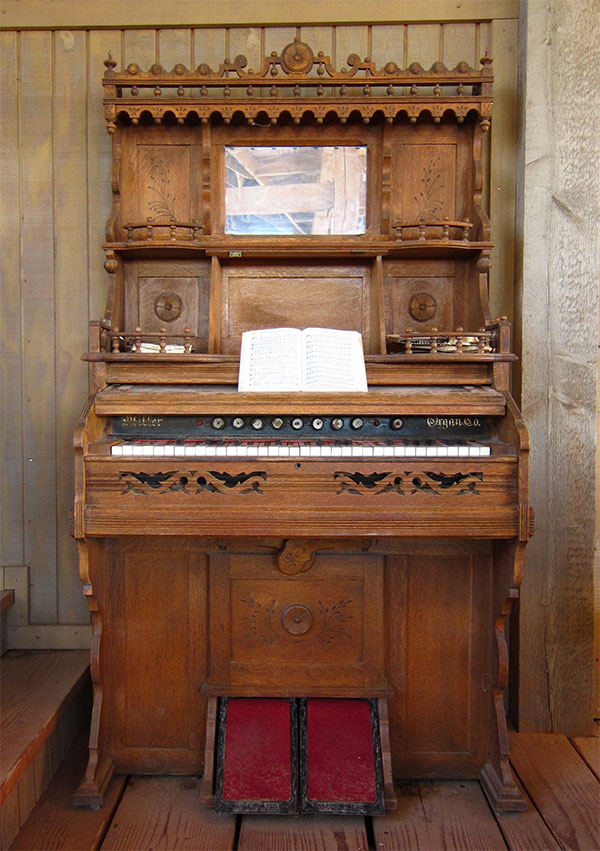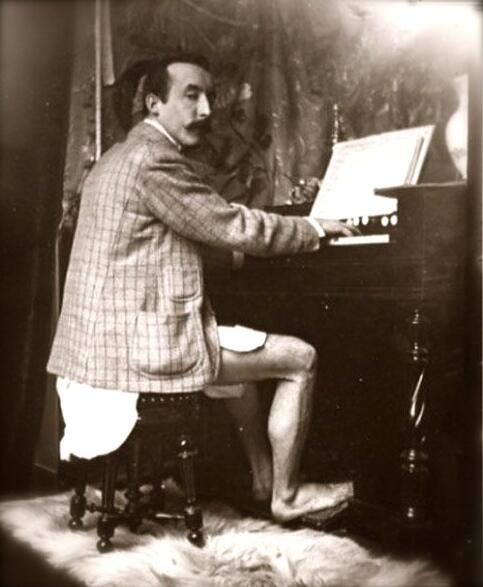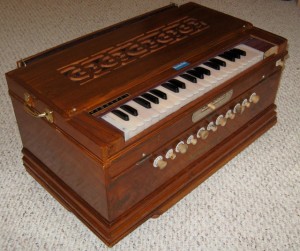The origins of the harmonium may date back to mouth organs from Asia, which probably inspired the appearance of the free-reed organ sometime around 1770.
The first patented harmonium was invented by a Frenchman, Alexandre Debain in 1842. It was pumped by two foot petals and became popular in churches that could not afford organs and in private homes as well. Many different versions, both elaborate and simple, began to be popular through the nineteenth century. Harmoniums remained popular in homes into the twentieth century, when the electronic organ displaced them.

Foot-Pumped Harmonium circa 1880

Artist Paul Gaugin plays a harmonium, circa 1895
Because the harmonium required no electricity, they traveled well. Christian missionaries took them to various part of the world in the mid-ninteeth century, including India. Since devotional music was so popular there, the harmonium seemed a natural fit.

Harmonium – Standard model
